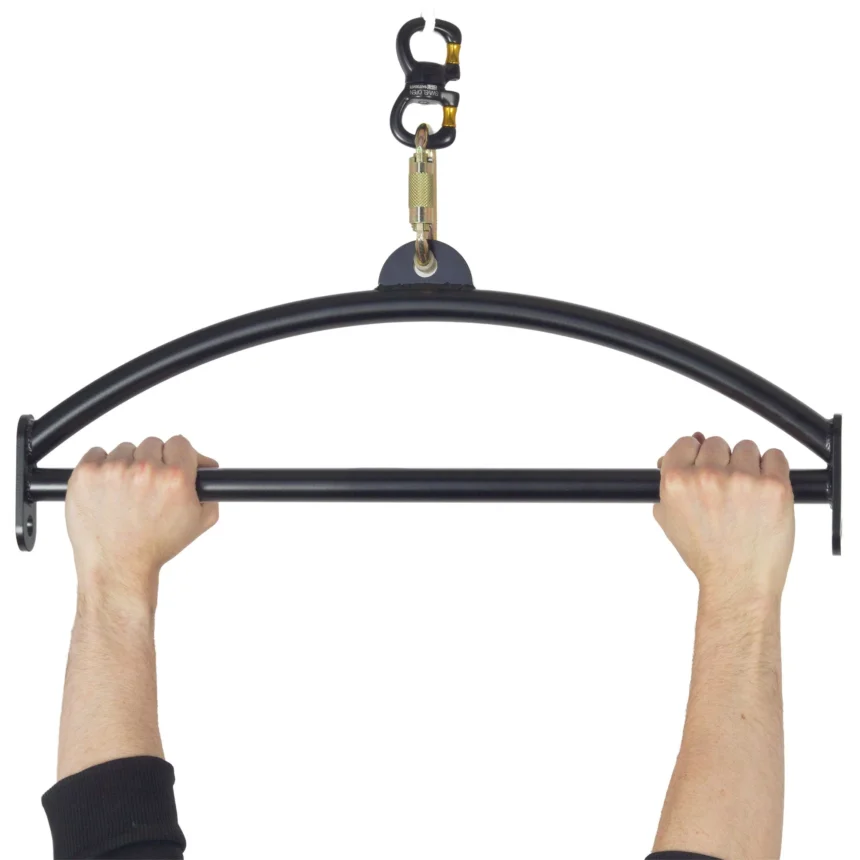Introduction
Spreader bars are generally involved apparatuses in different ventures, from lifting and gear to sports and sporting exercises. Despite their direct plan, these bars assume a fundamental part in guaranteeing well-being, proficiency, and equilibrium during tasks. In this thorough aide, we’ll investigate what a spreader bar is, its sorts, uses, and significance. We should separate it into basic, straightforward terms.
What Is a Spreader Bar?
A spreader bar is a gadget that circulates a heap across different focuses, guaranteeing equilibrium and decreasing the burden on lifting gear. They are normally utilized in lifting activities where weighty or larger-than-average burdens should be equitably upheld.
Spreader bars are long, even bars normally made of areas of strength for of like steel or aluminum. The accompanying connection focuses on each end for slings, snares, or other lifting gear. These bars help in keeping up with the underlying respectability of the heap being lifted while likewise forestalling harm to it.
How Does a Spreader Bar Function?
Spreader bars work by taking a solitary lifting point from a crane or derrick and spreading it out into at least two places. This appropriation limits weight on the lifting gadget and the actual heap.
For instance, if you’re lifting a weighty, wide item like a steel trailer, utilizing a solitary lifting point can cause lopsidedness and hazard harm to the holder. A spreader bar guarantees that the heap is lifted equally, decreasing the possibility of tipping or distortion.
Utilizations of Spreader Bars
Spreader bars are adaptable instruments utilized across different fields. The following are a few key applications:
Modern Lifting and Gear
In development, assembling, and transportation enterprises, spreader bars are essential for lifting weighty or ungracefully molded loads. They are frequently utilized for:
Lifting steel radiates.
Shipping enormous hardware.
Taking care of sensitive designs like glass boards or wind turbine edges.
Marine and Seaward Tasks
In the marine business, spreader bars are utilized for undertakings like lifting boats, submerged pipelines, or subsea hardware. They are uniquely intended to endure unforgiving circumstances like saltwater openness and high breezes.
Sports and Sporting Use
Spreader bars are not restricted to modern use. In sports, especially kiteboarding, and paragliding, they assist with conveying weight uniformly across outfits, guaranteeing better control and solace for the client.
Dramatic and Amusement Apparatus
In stage creations and shows, spreader bars are utilized to lift and suspend lighting apparatuses, props, and sound gear safely.
Clinical Applications
Spreader bars are likewise utilized in medical care settings, particularly in persistent lifting frameworks. They guarantee the protected and agreeable development of patients with restricted portability.
Kinds of Spreader Bars
Spreader bars come in different plans, each custom-fitted to explicit necessities. Here are the most widely recognized types:
Fixed Spreader Bars
These bars have a set length and are great for steady lifting errands where the elements of the heap continue as before.
Customizable Spreader Bars
As the name recommends, these bars can be changed under various lengths, making them flexible for lifting heaps of fluctuating sizes.
Particular Spreader Bars
These are profoundly adaptable bars comprised of tradable parts. They can be arranged for different applications, giving adaptability and cost viability.
Twin Spreader Bars
These comprise of two equal bars, frequently utilized for dealing with very wide loads.
Custom Spreader Bars
In particular businesses, specially crafted spreader bars are made to take care of one-of-a-kind necessities, for example, explicit burden aspects or natural circumstances.
Key Parts of a Spreader Bar
To all the more likely comprehend how a spreader bar works, realizing its key components is fundamental:
Fundamental Bar
The level bar is the essential construction liable for spreading the heap.
End Fittings
These are connection points where slings, shackles, or snares interface with the heap.
Lifting Carries
There the spreader bar interfaces with the crane or lift.
Slings and Shackles
Slings are adaptable lashes or bind used to get the heap, while shackles are metal connectors that join slings to the spreader bar.
Benefits of Utilizing Spreader Bars
Spreader bars offer various advantages, making them vital in lifting tasks:
Upgraded Security
By uniformly dispersing weight, spreader bars limit the gamble of mishaps brought about by load awkwardness or tipping.
Diminished Burden Harm
Spreader bars forestall harm to the heap by guaranteeing uniform help and dispensing with pressure focuses.
Adaptability
With movable and secluded plans, spreader bars can deal with a wide assortment of burdens and setups.
Further developed Productivity
They smooth out lifting activities, diminishing the time and exertion expected for complex assignments.
Financially savvy
While they are a speculation, the well-being and effectiveness gains frequently offset the expenses, particularly in enterprises with successive lifting necessities.
Variables to Consider While Picking a Spreader Bar
Choosing the right spreader bar for your requirements includes thinking about a few elements:
Load Limit
Continuously guarantee the spreader bar can deal with the heaviness of your heap, including well-being edges.
Load Aspects
Pick a bar that matches the size and state of the heap to guarantee even weight dissemination.
Material
For substantial applications, steel bars are liked. For lightweight assignments, aluminum might be adequate.
Configuration Type
Look at whether a fixed, customizable, or secluded bar best suits your tasks.
Ecological Circumstances
In marine or open-air conditions, erosion-safe materials like excited steel are fundamental.
Wellbeing Rules for Utilizing Spreader Bars
Spreader bars securely expect adherence to a few essential standards:
Lead Pre-Use Assessments
Take a look at the bar and all lifting parts for indications of wear, consumption, or harm.
Adhere to Producer Rules
Continuously utilize the spreader bar according to the producer’s suggestions for weight cutoff points and arrangements.
Guarantee Legitimate Preparation
Administrators ought to be prepared in safe lifting rehearses and the right utilization of spreader bars.
Try not to Over-burden
Never surpass the bar’s heap limit, as this could prompt hardware disappointment or mishaps.
Secure the Heap
Guarantee all slings, snares, and connections are accurately secured to forestall slipping.
Developments in Spreader Bar Innovation
With progressions in designing, spreader bars have advanced to incorporate highlights like:
Lightweight Materials: High-strength amalgams and composites decrease weight without compromising strength.
Brilliant Sensors: A few bars currently incorporate sensors to screen load weight and distinguish irregular characteristics.
Handcrafts: PC helped plan (computer-aided design) considers the formation of bars customized to explicit ventures and applications.
End
Spreader bars might seem like straightforward apparatuses, yet they are significant for protected and productive lifting activities. By uniformly dispersing weight, they forestall harm to both the heap and the lifting hardware, guaranteeing smooth and secure dealing with.
Whether in modern settings, sports, or medical services, spreader bars have demonstrated their adaptability and significance. By grasping their sorts, uses, and security conventions, you can take full advantage of this fundamental gear.
Picking the right spreader bar and utilizing it accurately can essentially further develop efficiency while guaranteeing well-being — a mutual benefit for any activity.
As often as possible Clarified pressing issues (FAQs) About Spreader Bars
Here are a few normal inquiries and replies to assist with explaining any questions about spreader bars:
What is the main role of a spreader bar?
A spreader bar is essentially used to convey the heaviness of a heap uniformly across different lifting focuses. This lessens the weight on the heap and the lifting hardware, guaranteeing protected and proficient dealing.
What materials are spreader bars commonly made of?
Most spreader bars are produced using tough materials like steel or aluminum. For explicit applications, for example, lightweight lifting or destructive conditions, materials like hardened steel or carbon fiber composites might be utilized.
Could spreader bars at any point be utilized in all lifting activities?
Spreader bars are flexible, however, they may not be reasonable for all lifting tasks. For instance, extremely bound spaces could require particular lifting gear. Continuously evaluate the heap and climate before choosing a spreader bar.
How would I decide the right spreader bar for my necessities?
Consider factors like:
Load weight and aspects: Guarantee the bar’s ability matches your heap.
Climate: Pick consumption-safe materials for outside or marine use.
Adaptability: Movable or secluded bars are great for differing loads.
Talk with makers or lifting specialists for explicit suggestions.
Are spreader bars flexible?
Indeed, numerous spreader bars are flexible or secluded, permitting them to oblige heaps of various sizes. Fixed bars, notwithstanding, are intended for steady applications where the heap aspects stay consistent.
How do spreader bars contrast from lifting radiates?
While the two devices convey weight during lifting, the principal distinction lies in their plan:
Spreader bars work in strain, spreading the lifting force across various focuses.
Lifting radiates work in bowing, conveying the heaviness of the heap straightforwardly.
Spreader bars are great for wide loads while lifting radiates are utilized for concentrated or weighty focal burdens.
What are the wellbeing safeguards while utilizing spreader bars?
To guarantee safe use, consistently:
Asses the bar and parts before use.
Never surpass the heap limit.
Observe the producer’s rules.
Train administrators on legitimate use.
How often should spreader bars be inspected?
Spreader bars should be visually inspected before and after each use. A more thorough inspection, including load testing and structural checks, should be conducted periodically, depending on usage frequency and environmental conditions.
Can spreader bars be customized?
Yes, many manufacturers offer custom-designed spreader bars to meet specific requirements, such as unique load shapes, extreme environmental conditions, or industry-specific needs.
Are there any alternatives to spreader bars?
Alternatives like lifting beams or chain slings can sometimes be used, depending on the nature of the load and lifting requirements. However, spreader bars are often preferred for their ability to handle wide or heavy loads safely.
How do smart spreader bars work?
Smart spreader bars are equipped with sensors that monitor load weight, balance, and stress points in real-time. They can send alerts to operators if any abnormalities are detected, enhancing safety and efficiency.
What industries rely most heavily on spreader bars?
Industries such as construction, shipping, oil and gas, healthcare, and entertainment frequently use spreader bars for various lifting and rigging operations.
How do I store spreader bars when not in use?
Store spreader bars in a dry, clean area away from corrosive elements. Avoid placing heavy objects on top of them, and use proper storage racks if available to prevent damage.
What should I do if a spreader bar is damaged?
Immediately take the bar out of service and consult a certified inspector or manufacturer for repair or replacement. Using damaged equipment can result in accidents and operational failures.
Can spreader bars be used for recreational purposes?
Yes, spreader bars are commonly used in sports like kiteboarding and paragliding. In these cases, they help distribute weight evenly across harnesses, providing better control and comfort.
By addressing these frequently asked questions, you’ll gain a deeper understanding of spreader bars and how to use them effectively and safely in various applications. If you have specific concerns or unique lifting requirements, consult with a professional for tailored advice.











